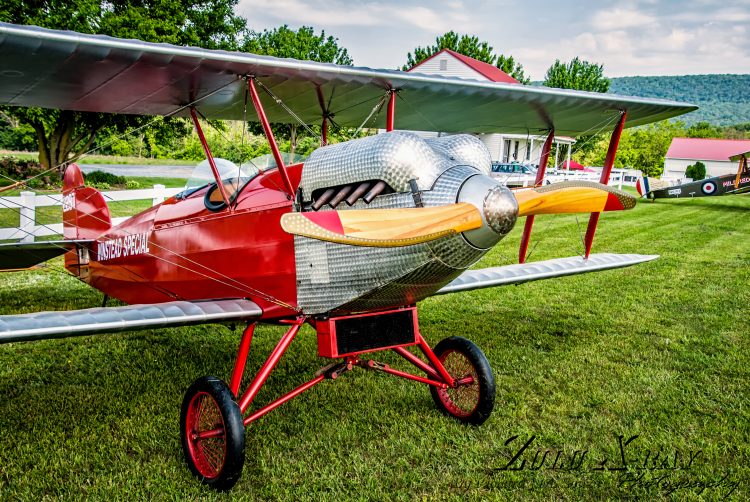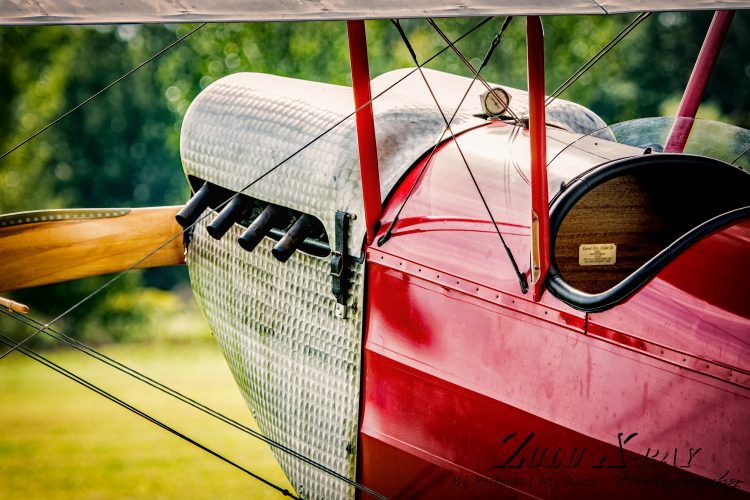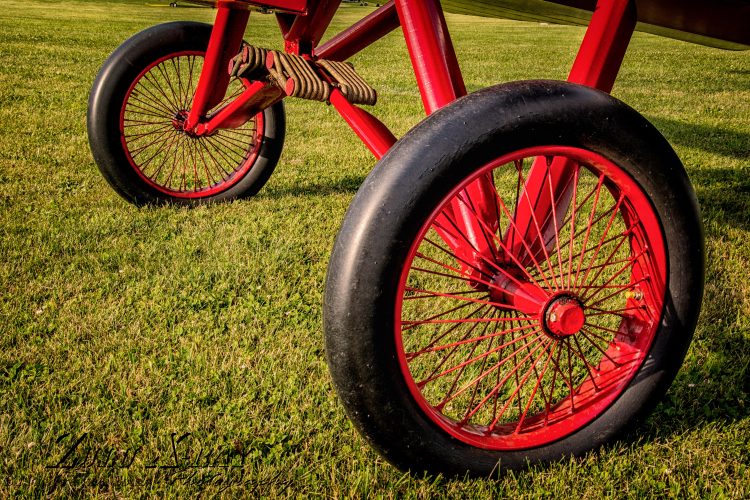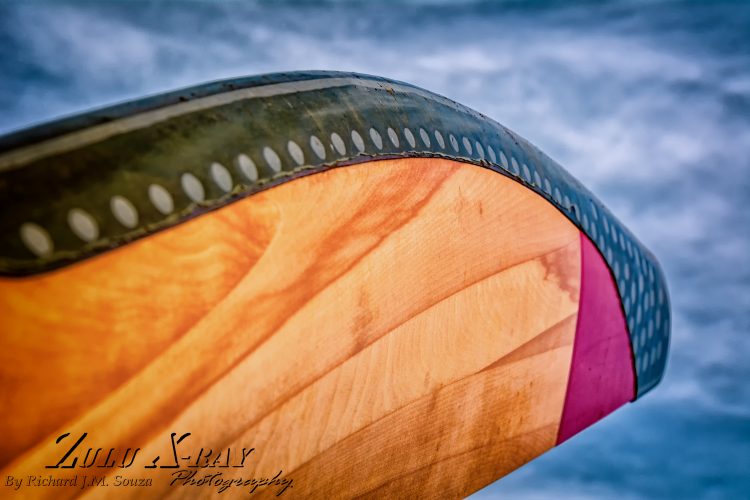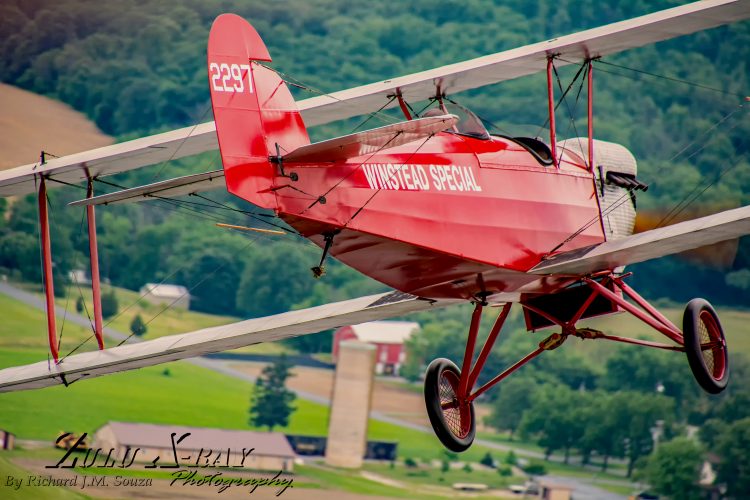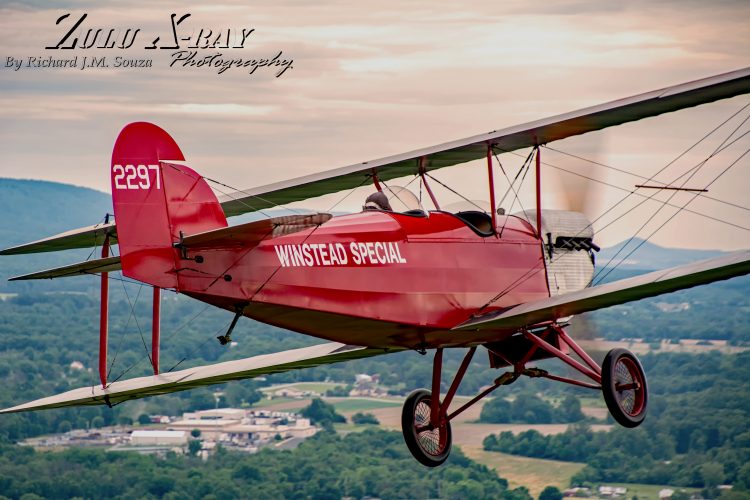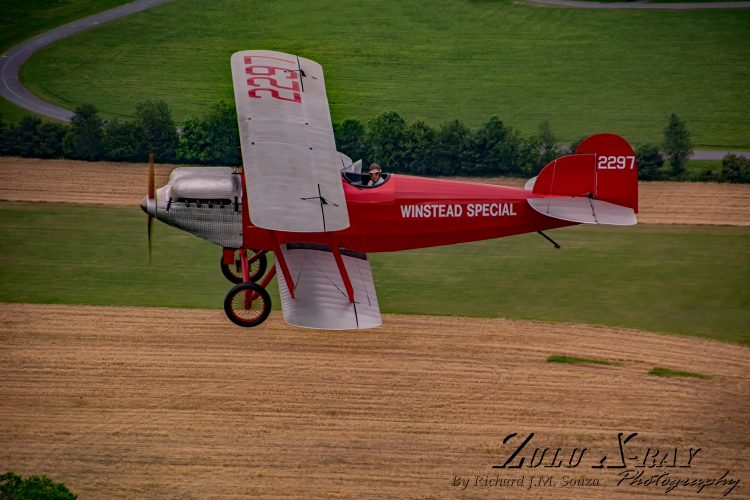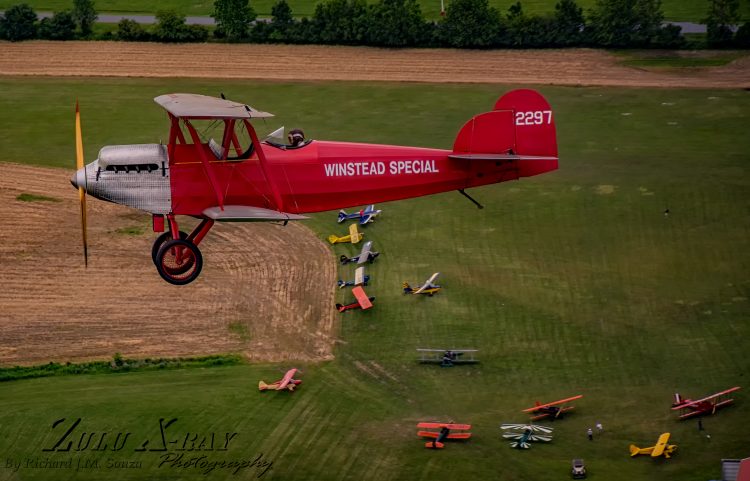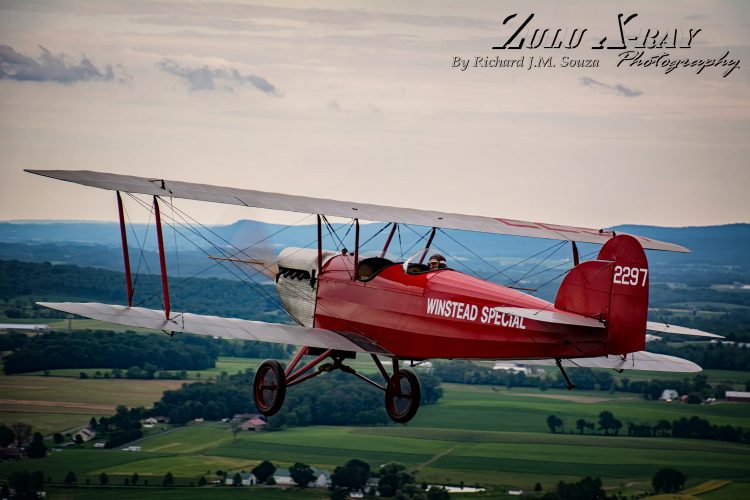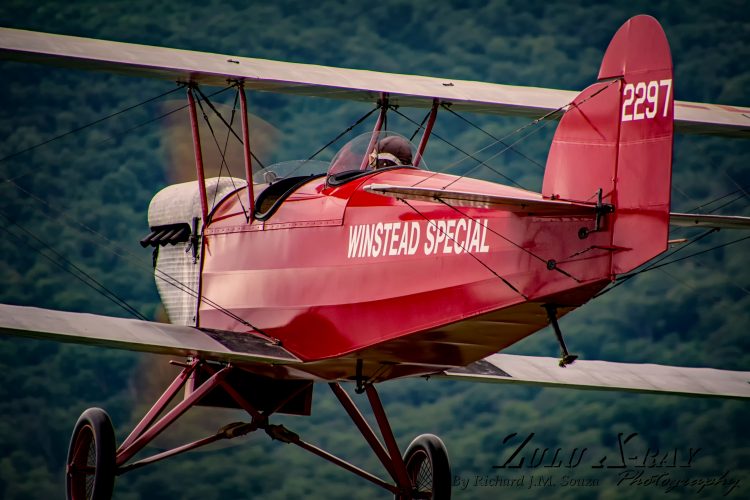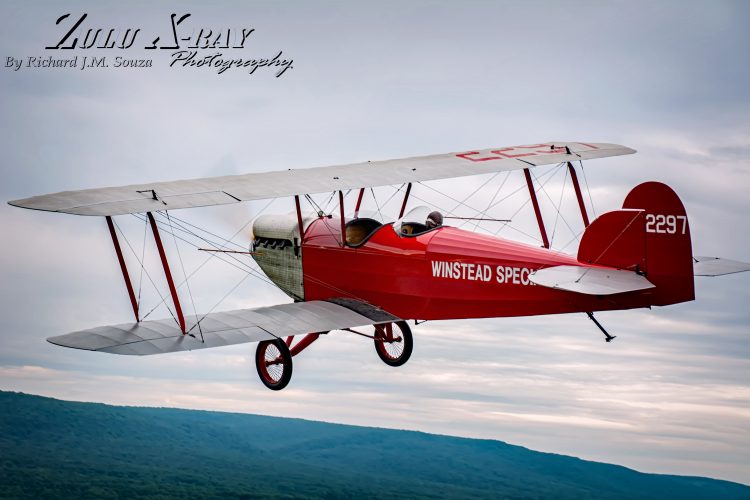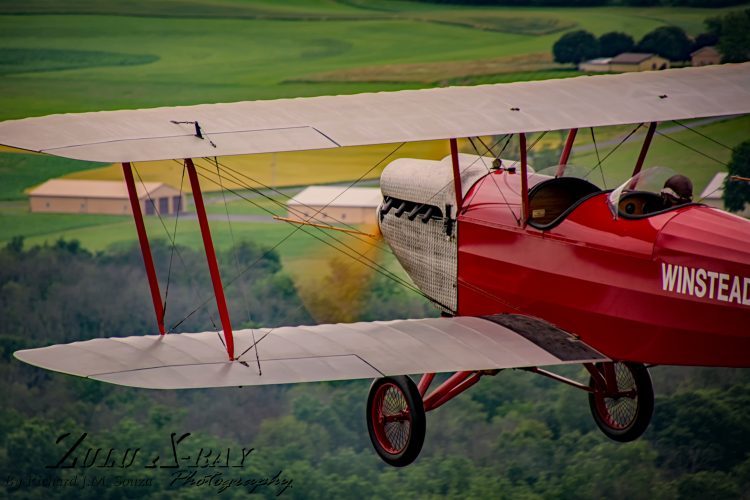The word “special” can be an adjective defined as better, greater or otherwise different from what is usual. This word certainly applies to anything that is one of a kind person, place or thing. There are plenty on the list of “one of a kinds” when it comes to aircraft. Air Museum Network stopped by the very “special” Golden Age Air Museum to take a look at their one of a kind 1926 Winstead Special.
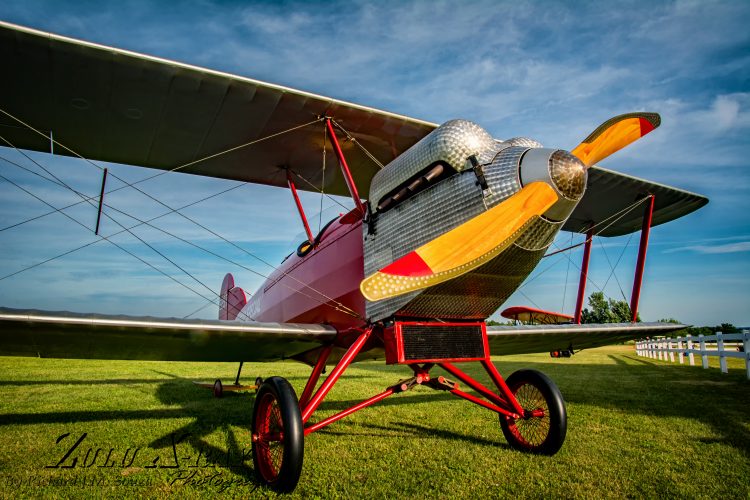
Located in Bethel, Pennsylvania, The Golden Age Air Museum has a unique collection of aircraft from the Golden Era. While the museum’s main attraction may be their 1918 Curtiss JN4-D “Jenny”, there is one aircraft with a pedigree that stands its ground next to its biplane cohort. All the aircraft at Golden Age Air museum are “special” but only one sports the word on its fuselage. Conceived and manufactured in 1926, the Winstead Special was the brain child of two brothers, Carl and Guy Winstead.
This world class museum commemorates the period in aviation history between the 1920’s and 30’s known as the Golden Age of flight. This pivotal time was when aviation went from novelty and curiosity to mainstream and the wave of the future. It was an exciting time of engineering, exploration and great advancements in airframe and power plant design.

Great technological advances had been made since two other brothers took to Kill Devil Hills, North Carolina, but in 1926, aviation was still in its infancy. A great part of the world’s population had never seen a flying machine. Many who flew during WWI purchased surplus aircraft and traveled the country. They introduced the nation to this strange contraption called the “aeroplane”. These pilots were called Barnstormers and their exploits would become legendary.
Manufactures also played a role in the Golden Age Era. It was their vision and designs that would be put to the test by the intrepid airmen. Together they would revolutionize aviation and air travel around the world.
If these names sound familiar, it is not a coincidence. Stearman, Beech and Cessna all became well known manufacturers and built some of the most legendary aircraft that are still flying today. But before the Kaydet, the King Air and Citation could become household names, these aviation pioneers needed to clear and pave the road into the unknown.

Many manufacturers fell along the way. Unfortunately Winstead was one of them. The Winstead Special had a short yet storied career. Carl Winstead flew the aircraft with the “Flying Aces Air Circus”. Co-founder and aviatrix and wing walker Jesse E. Walker graced the wings of the elegant bird. Carl continued to fly his creation in air races and barnstorming demonstrations into the 1930s. Like many airframes of yesteryear, the Winstead Special would eventually be sold several times until it was buried in “storage” somewhere in rural America.
Read Gilles Auliard‘s great and comprehensive story of the history of the Winstead Special on 1000aircraftphotos.com.
The following passage from Gilles’ story succinctly sums up how the aircraft was born:
Stearman and Beech decided to start their own company, and with the help of Clyde Cessna and his money, and Travel Air was born. When Stearman and Beech left Swallow the airframe was put up for sale. Carl Winstead was a mechanic for Swallow and he and his brother Guy purchased the fuselage to create the Winstead Special.
Any aircraft buried in a hangar or a barn is a treasure to be discovered. Once treated like a piece scrap wood, the Winstead Special would be discovered and purchased in the 1990’s by Paul Dougherty and his late father Paul Sr.
Purchasing the aircraft was the easy part. It would take four years to get the one and only Winstead Special back to its former Flying Aces Air Circus glory.
Today, the Winstead Special is one of the stars of the Golden Age Air Museum’s flying fleet. The contrast of colors between the red fuselage, silver wings and the unique burnished aluminum engine cowling (similar to that of the infamous “Spirit of St. Louis”), make this vintage aircraft stand out in the crowd. The “special” is only upstaged by the immaculately restored 1918 JN4-D Curtiss “Jenny”. Both aircraft are powered by rare Curtiss OX-5 engines.

Following the Flying Circus Show earlier this year, Air Museum Network was given the unique opportunity to do an air-to-air photo shoot with this one of a kind aircraft. The Winstead Special was flown by museum pilot Neil Baughman. Neil has been around these aircraft a great part of his life and being able to have Neil at the controls made this shoot even more… “Special”. The photo ship was an all pink 1946 Aeronca Champ and would be flown by vintage aircraft pilot Andrew King. With perfect weather conditions and an experienced duo at the controls, this shoot was bound to be successful.
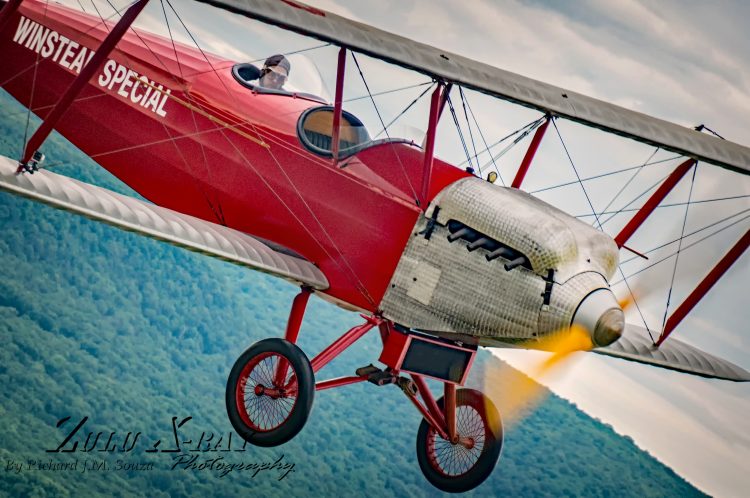
The Winstead Special was first to take off. Andrew then pushed the throttle forward and raced down the grass field. It wasn’t soon after take-off that the Aeronca caught up with the “slightly older” aircraft. For the next 15 to 20 minutes, Andrew and Neil would position their respective aircraft to allow the Winstead to be captured from different angles, different back drops and in different light.
The familiarity of the pilots with each other and each aircraft is critical to a safe and successful air-to-air.

While preparing this piece, we learned that, Andrew has flown 6 different OX-5 powered aircraft and the Winstead, being smaller and lighter than the rest, has better performance and flying qualities than the rest of the group. Offering the pilot’s perspective, Andrew stated:
“You can definitely feel the difference in flying an airplane that’s lighter than the others, in the same way that a Piper Cub feels different from a Citabria. It’s also a very pure type of flying, just stick and rudder, with only a few necessary instruments on the instrument panel, not even an airspeed indicator. You fly by sound and feel, and the sound of the OX-5 purring away up front is a unique experience that very few pilots of today get to experience.”
The qualities of the Winstead are not limited to the air. Andrew goes on to say:
“On the ground and without brakes or steerable tail skid, this aircraft is relatively tame to steer in comparison to other “old aircraft”. The fairly large rudder and the center of gravity in relation to the main wheels seem to make it easier to keep the aircraft straight on landing and easier to maneuver when taxiing.”
The Winstead Special has an impressive presence on the ground and in the air. It is an aircraft that has beautiful lines, color and texture. It is an aircraft that photographers gravitate toward. Another wonderful thing about this plane is that it is accessible to the public. Unlike most museums, Golden Age pull their aircraft out (on event days) for the public to be able to get close and admire these vintage birds before and after they fly. While there is a “hands off” policy, it is possible to get close and photograph the aircraft from multiple angles. There is always a volunteer on hand to provide the historical context of any of the aircraft in the museum’s inventory.

Air Museum Network was privileged to have the opportunity to photograph this one of a kind aircraft in its element. We wish to Thank, Golden Age Air Museum’s Paul Dougherty, Neil Baughman, Andrew King and Eric Lunger for making this air-to-air shoot possible.
For more information on The Golden Age Air Museum and their event schedule, visit www.goldenageair.org

